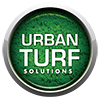Proper Drainage Systems
Proper Drainage Systems: Ensuring the Longevity of Artificial Grass
The allure of artificial grass comes not just from its lush appearance but also from its practical benefits. However, one crucial aspect that can determine the success of an artificial grass installation is the drainage system. Without proper drainage, the lifespan of the turf can be drastically reduced, and its aesthetic appeal can be compromised.
Why Drainage is Essential
Artificial grass, unlike its natural counterpart, doesn’t absorb water. This means that without an efficient drainage system, water can accumulate on the surface, leading to multiple issues:
Water Logging: Prolonged water accumulation can lead to water logging, making the surface muddy and unsightly. This not only affects the appearance but can also become a breeding ground for mosquitoes and other pests.
Mould and Mildew: Stagnant water can lead to the growth of mould and mildew on the artificial grass. This not only damages the turf but can also pose health risks to those using the area.
Decreased Lifespan: Continuous water exposure can degrade the backing materials of the artificial grass, reducing its overall lifespan.
Components of an Effective Drainage System
To ensure efficient water drainage, a combination of well-prepared ground and specific aggregates is used:
Grading: Before laying the artificial grass, the ground should be graded to ensure that water flows away from buildings and other structures. This prevents potential damage and water pooling in undesired areas.
Sub-base Materials: A layer of aggregates, often crushed stone or gravel, is laid beneath the turf. These aggregates facilitate water flow, directing it away from the surface and into the ground below.
Perforated Backing: Most high-quality artificial grass products come with a perforated backing. This allows water to pass through the grass and into the sub-base below, further aiding in drainage.
Drainage Channels: In areas prone to heavy rainfall or where water accumulation is a significant concern, installing drainage channels or French drains can be beneficial. These channels further direct water away from the installation site, ensuring it remains dry and usable.
Routine Maintenance for Optimal Drainage
While a well-installed drainage system requires minimal maintenance, periodic checks are essential. Over time, debris like leaves, dirt, and other foreign materials can clog the perforations in the artificial grass or the sub-base layers, impeding water flow. Regular cleaning and occasional deep cleaning can help maintain optimal drainage performance.
A proper drainage system is not just an afterthought but a pivotal component of any artificial grass installation. By giving it due attention, homeowners and property managers can ensure that their artificial turf remains vibrant, clean, and long-lasting.
